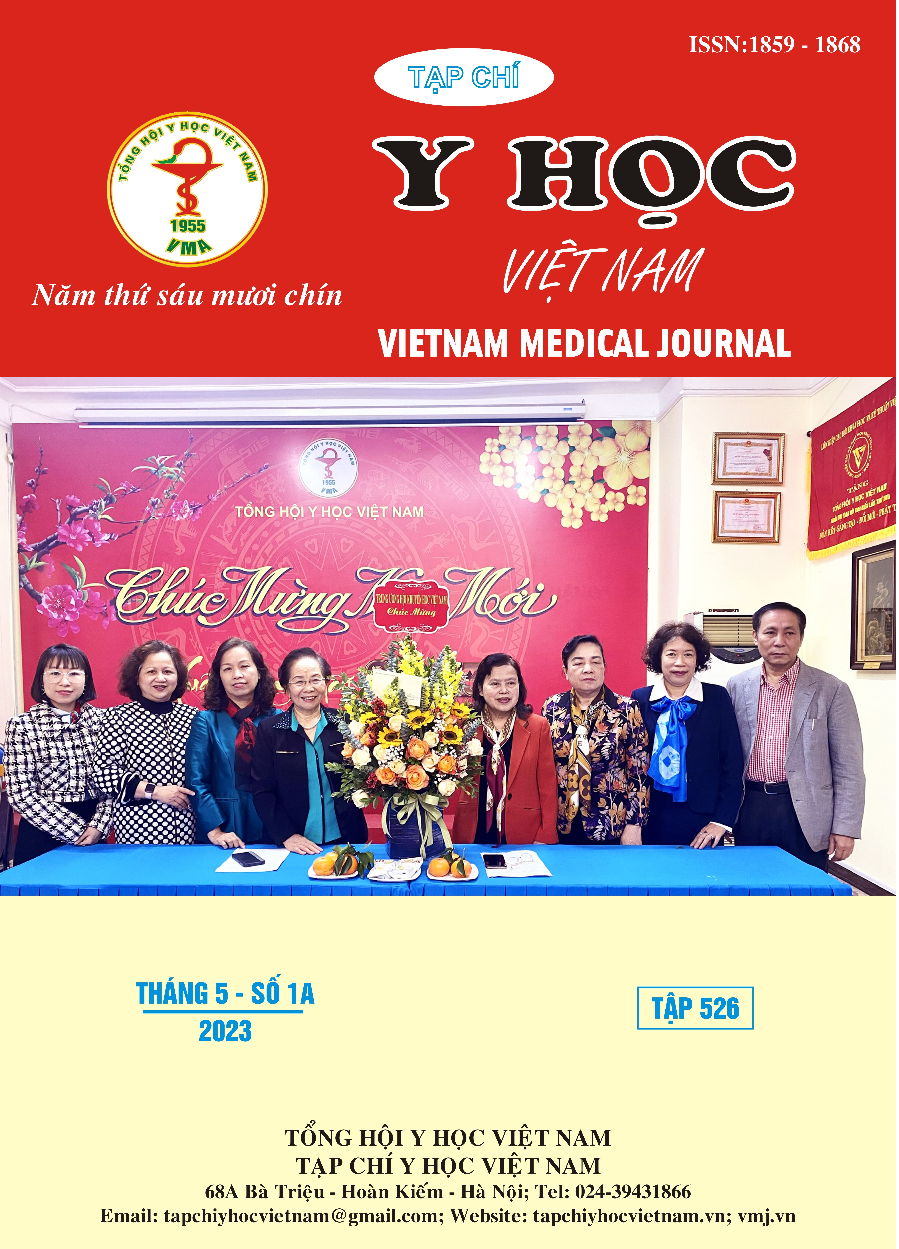ROLE OF HIGH - RESOLUTION COMPUTED TOMOGRAPHY FOR THE ANALYSIS OF ONODI CELL IN THE EVALUATION OF PRE-ENDOSCOPIC SINUS SURGERY OF CHRONIC SINUSITIS
Main Article Content
Abstract
Purposes: To evaluate the role of high resolution computed tomography (HRCT) for the analysis of Onodi cell in the evaluation of pre-endoscopic sinus surgery of chronic sinusitis. Matherial and Method: The cross sectional descriptive study on the chronic sinusitis patients who underwent the sinus HRCT and the endoscopic sinus surgery. Then, the patients with Onodi cell was noted and rated. The Onodi cell was analyzed and evaluated by its contact with the optic nerve and the internal carotid arteries on HRCT to prevent the complication pre-endoscopic sinus surgery. Results: From 09/2020 to 9/2022, 200 chronic sinusitis patients who underwent the sinus HRCT and endoscopic sinus surgery at Hanoi Medical University Hospital. Among them, 197 patients with Onodi cell was observed, take into account for 98.5%. Patients with bilateral Onodi cell was 195, take into account for 97.5%. The contact of Onodi cell with optic nerve was observed on 108 patients, take into account for 54% and with internal carotid artery on 11 patients, occupied 5.5%. Conclusion: Sinus HRCT had an important role for the analysis of the Onodi cell in order to establish the pre- endoscopic sinus surgery bilan.
Article Details
Keywords
Onodi cell, sinus HRCT, endoscopic sinus surgery
References
2. O’Brien WT, Hamelin S, Weitzel EK. The Preoperative Sinus CT: Avoiding a “CLOSE” Call with Surgical Complications. Radiology. 2016;281(1):10-21. doi:10.1148/radiol.2016152230
3. Y C, Fa K. An update on the classifications, diagnosis, and treatment of rhinosinusitis. Curr Opin Otolaryngol Head Neck Surg. 2009;17(3). doi:10.1097/MOO.0b013e32832ac393
4. Weitzel EK, Floreani S, Wormald PJ. Otolaryngologic heuristics: a rhinologic perspective. ANZ J Surg. 2008;78(12):1096-1099.
doi:10.1111/j.1445-2197.2008.04757.x
5. Shpilberg KA, Daniel SC, Doshi AH, Lawson W, Som PM. CT of Anatomic Variants of the Paranasal Sinuses and Nasal Cavity: Poor Correlation With Radiologically Significant Rhinosinusitis but Importance in Surgical Planning. AJR Am J Roentgenol. 2015;204(6): 1255-1260. doi:10.2214/AJR.14.13762
6. Nouraei S a. R, Elisay AR, Dimarco A, Abdi R, Majidi H, Madani SA, Andrews PJ. Variations in paranasal sinus anatomy: implications for the pathophysiology of chronic rhinosinusitis and safety of endoscopic sinus surgery. J Otolaryngol - Head Neck Surg J Oto-Rhino-Laryngol Chir Cervico-Faciale. 2009;38(1):32-37.
7. Tomovic S, Esmaeili A, Chan NJ, Choudhry OJ, Shukla PA, Liu JK, Eloy JA. High-resolution computed tomography analysis of the prevalence of Onodi cells. The Laryngoscope. 2012;122(7):1470-1473. doi:10.1002/lary.23346
8. Senturk M, Guler I, Azgin I, Sakarya EU, Ovet G, Alatas N, Tolu I, Erdur O. The role of Onodi cells in sphenoiditis: results of multiplanar reconstruction of computed tomography scanning. Braz J Otorhinolaryngol. 2017;83(1):88-93. doi:10.1016/j.bjorl.2016.01.011
9. Stammberger H, Hosemann W, Draf W. [Anatomic terminology and nomenclature for paranasal sinus surgery]. Laryngorhinootologie. 1997;76(7):435-449. doi:10.1055/s-2007-997458
10. Võ Thanh Quang. Nghiên cứu chẩn đoán và điều trị viêm đa xoang mãn tính qua phẫu thuật nội soi chức năng mũi xoang. Published online 2004.


